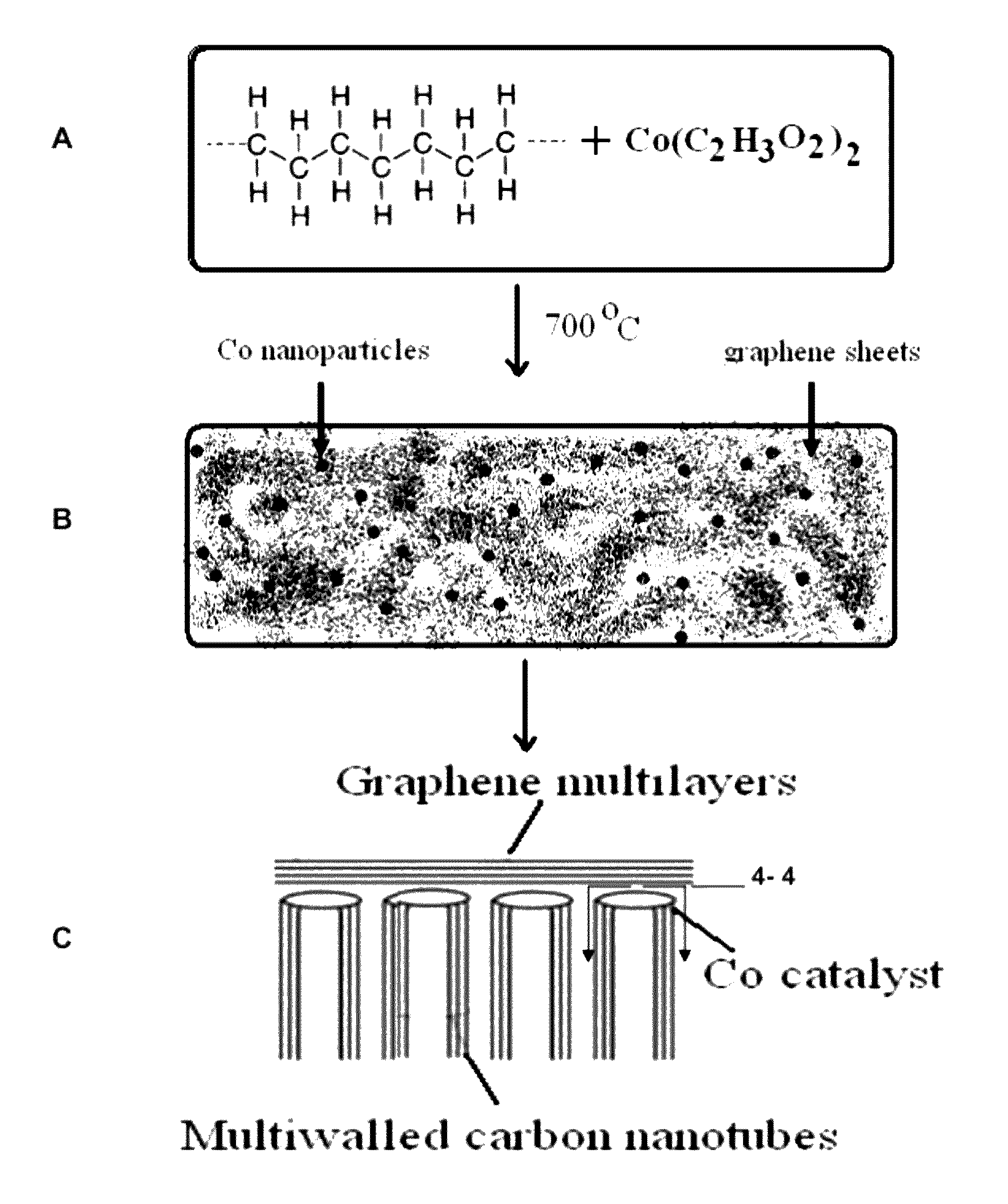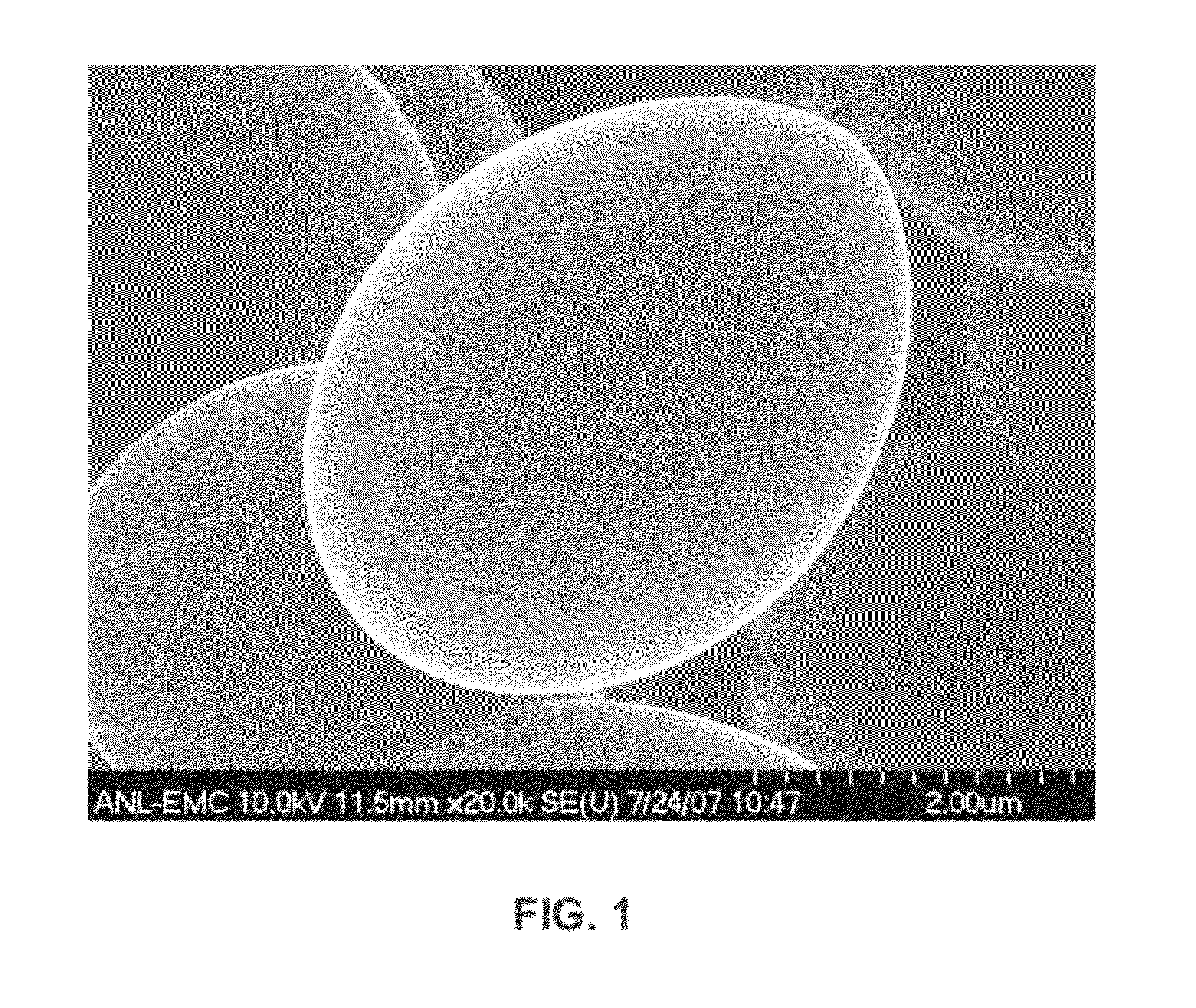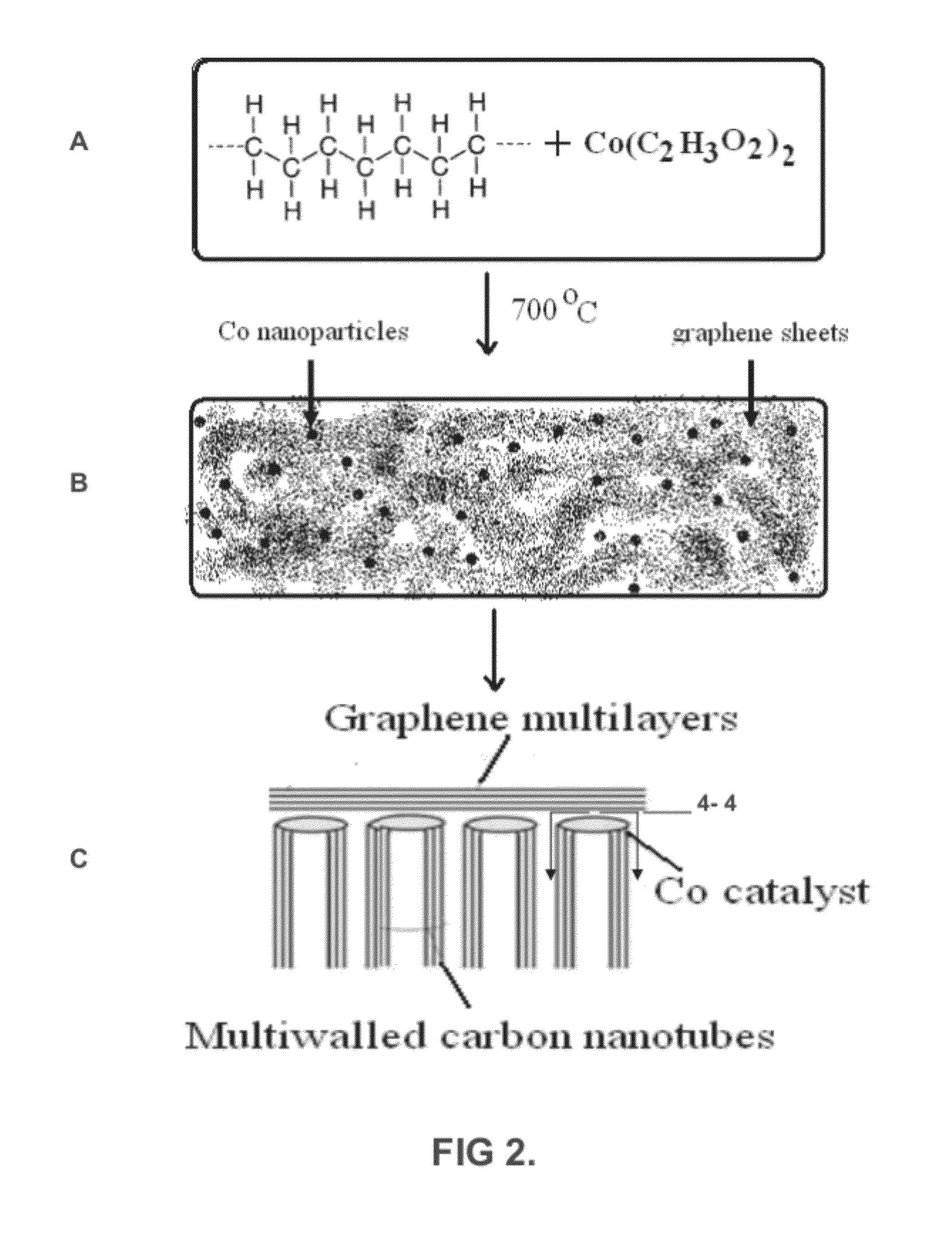Process for remediation of plastic waste
a technology for plastic waste and processing equipment, applied in separation processes, hydrogen sulfides, conductors, etc., can solve the problems of ineffective use of landfills for storing plastic waste, limited success of these facilities and the technology they use, and inability to produce homogenous materials from chemically different polymers to make new products from recycled waste, etc., to achieve the effect of facilitating the minimization of mixed plastic waste without the need for time-consuming and labor-intensive sorting and high yield
- Summary
- Abstract
- Description
- Claims
- Application Information
AI Technical Summary
Benefits of technology
Problems solved by technology
Method used
Image
Examples
example
[0070]One experimental remediation setup for small scale decomposition reactions was carried out using a Swaglock 316 SS chamber stainless steel reactor with a volume of 2.5 cm3. The reactor was filled with 0.5 g of polymer waste which yielded 0.2 g of carbonaceous product (carbon ash). A second experimental remediation setup was carried out using a Swaglock chamber reactor with a volume of 5 cm3 that decomposed 1.0 g of polymer waste to produce 0.4 g of carbonaceous products (carbon ash). Multiple runs using each experimental setup were executed in an inert atmosphere and a standard air atmosphere, with the air atmosphere setup typically yielded 10 to 15 percent fewer egg-shaped and spherical solid carbons than the inert atmosphere setup. Conversion percents of feedstock to product ranged from 30 to 55 percent, with 40 percent being the typical percentage. Solid carbon particles with egg-shapes and sphere shapes that had between 2 to 12 micrometer (10−6 m) outer diameters were obta...
PUM
| Property | Measurement | Unit |
|---|---|---|
| temperature | aaaaa | aaaaa |
| temperature | aaaaa | aaaaa |
| temperature | aaaaa | aaaaa |
Abstract
Description
Claims
Application Information
 Login to View More
Login to View More - R&D
- Intellectual Property
- Life Sciences
- Materials
- Tech Scout
- Unparalleled Data Quality
- Higher Quality Content
- 60% Fewer Hallucinations
Browse by: Latest US Patents, China's latest patents, Technical Efficacy Thesaurus, Application Domain, Technology Topic, Popular Technical Reports.
© 2025 PatSnap. All rights reserved.Legal|Privacy policy|Modern Slavery Act Transparency Statement|Sitemap|About US| Contact US: help@patsnap.com



